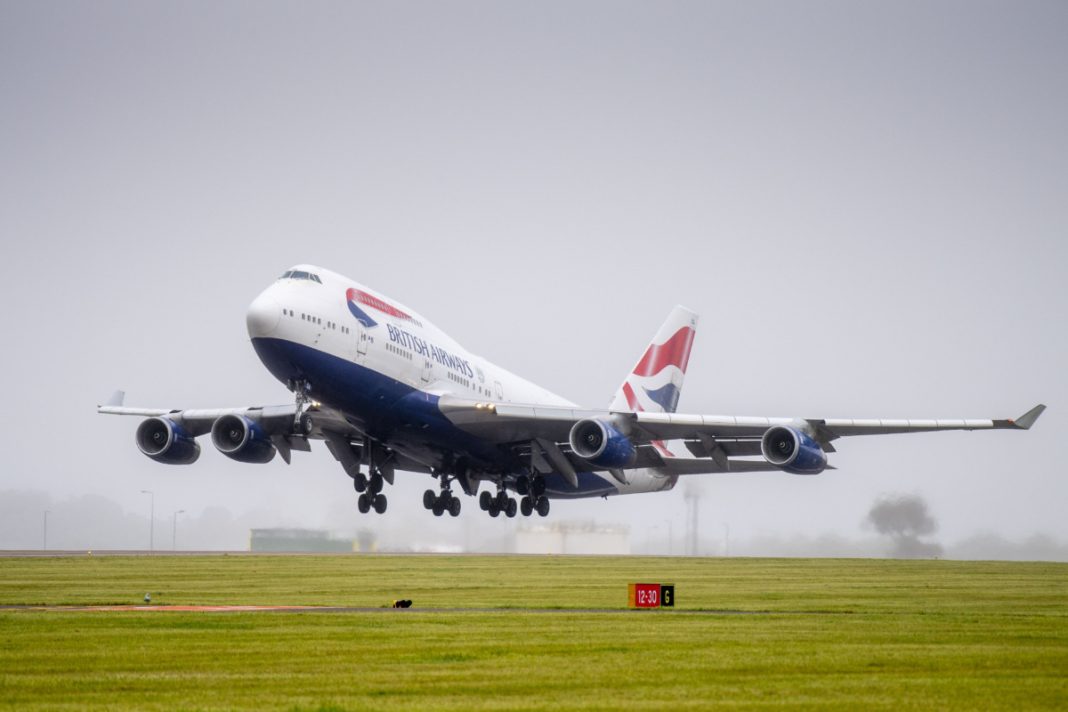Many people consider the iconic, four-engine Boeing 747 to be the ‘Queen of the skies.’ However, there was once a time when the American manufacturer was also working on a shortened variant with three engines. But what exactly is the story of the curious proposal?

The Boeing 747
The Boeing 747 is one of the company’s most successful aircraft. February 2019 marked 50 years since the first flight of the original test aircraft, and Boeing has released several different iterations of the aircraft since then. According to Planespotters.net, Boeing has constructed and delivered 1,561 747 aircraft, with UPS taking delivery of the most recent example earlier this month.
The latest model that Boeing is producing is the 747-8, and its cargo equivalent, the 747-8F. In a three-class configuration, SeatGuru reports that Korean Air’s examples of the aircraft hold 368 passengers (314 economy, 48 business, 6 first). Lufthansa launched the aircraft commercially in June 2012, and its four-class configuration on the 747-8 seats 364 passengers (244 economy, 32 premium economy, 80 business, 8 first).
The Boeing 747-8 is also the world’s longest airliner, beating the Airbus A340-600 by just five feet (1.5m). In 2018, Simple Flying also reported that Boeing was currently working on two new Air Force One B747s for the US Government, for delivery by 2024.

The proposed tri-jet variant
Nowadays, it is hard to imagine the Boeing 747 as anything other than a four-engine icon. However, in the 1960s and 1970s, Boeing was considering constructing a three-engine variant of the type. This tri-jet aircraft would have had one engine on either wing, with an additional engine mounted in the tail. This design would have been similar to the narrowbody Boeing 727, although obviously much larger.
The Boeing 747 Trijet would have been significantly shorter than the base 747. It was designed to compete with contemporary widebody tri-jet airliners, namely the Lockheed L1011 and the McDonnell Douglas DC-10. The aircraft would have had a greater passenger capacity, payload, and range than both of these prospective competitors.

Why did the project fail?
However, the proposal was ultimately unsuccessful due to two key factors. The first of these was the engineering required for this new aircraft. For this new aircraft to have been structurally sound, the aircraft would have required a brand new wing to be designed. This is because the contemporary wing design was made for two engines on either side. Boeing eventually decided against developing a new wing to solve the problem.
Pilot training requirements were the second factor in the project’s failure. Boeing was aiming to create a product that was almost identical to its regular 747 product as far as pilots could tell. Wanting to require minimal training for the conversion to the three-engine variant, Boeing was aiming to maintain the existing handling characteristics. This proved hard for the company to achieve with two main engines on the wings and a third mounted in the tail.
What became of the Boeing 747 tri-jet?
Boeing didn’t completely abandon the tri-jet variant of the 747. Instead of continuing development with three engines, the manufacturer created a shorter 747 with the conventional four engines. This was named the 747SP, with the suffix standing for ‘Special Performance.’ Entering service in 1976 with Pan Am, Boeing built a total of 45 747SP aircraft. According to Planespotters.net, six of these aircraft are still in operation today.

Arguably the most interesting 747SP still in operation is known as SOFIA, which stands for ‘Stratospheric Observatory For Infrared Astronomy.’ With a huge door on the back of the aircraft that opens during flight, this aircraft houses a flying telescope. This aircraft, built in 1977 and currently registered as N747NA, was previously in operation with Pan Am and United Airlines before NASA acquired it in 1997. It bears the name ‘Clipper Lindbergh.’
A more successful second-generation tri-jet
Boeing’s tri-jet variant of the 747 ultimately proved unsuccessful in competing with the Lockheed L1011 and McDonnell Douglas DC10. However, towards the end of the 20th century, McDonnell Douglas launched a second-generation tri-jet airliner: the MD-11.

The MD-11 made its commercial debut with Finnair in December 1990, and was designed to compete with the Boeing 777 and Airbus A340. Its basic configuration was similar to that of the older DC-10; however it benefitted from updated engines. The MD-11 also boasted a longer fuselage and wider wings than its predecessor.
However, according to Planespotters.net, McDonnell Douglas only ended up building 200 of the type, with multiple orders left unfulfilled. The type now only sees service with cargo airlines. Having seen the fate of the MD-11 as a passenger airliner, Boeing can perhaps be said to have dodged a bullet by not producing the tri-jet 747. Nonetheless, it would undoubtedly have made for a curious sight in the skies worldwide had it come to fruition.
[ad_2]
Source link


